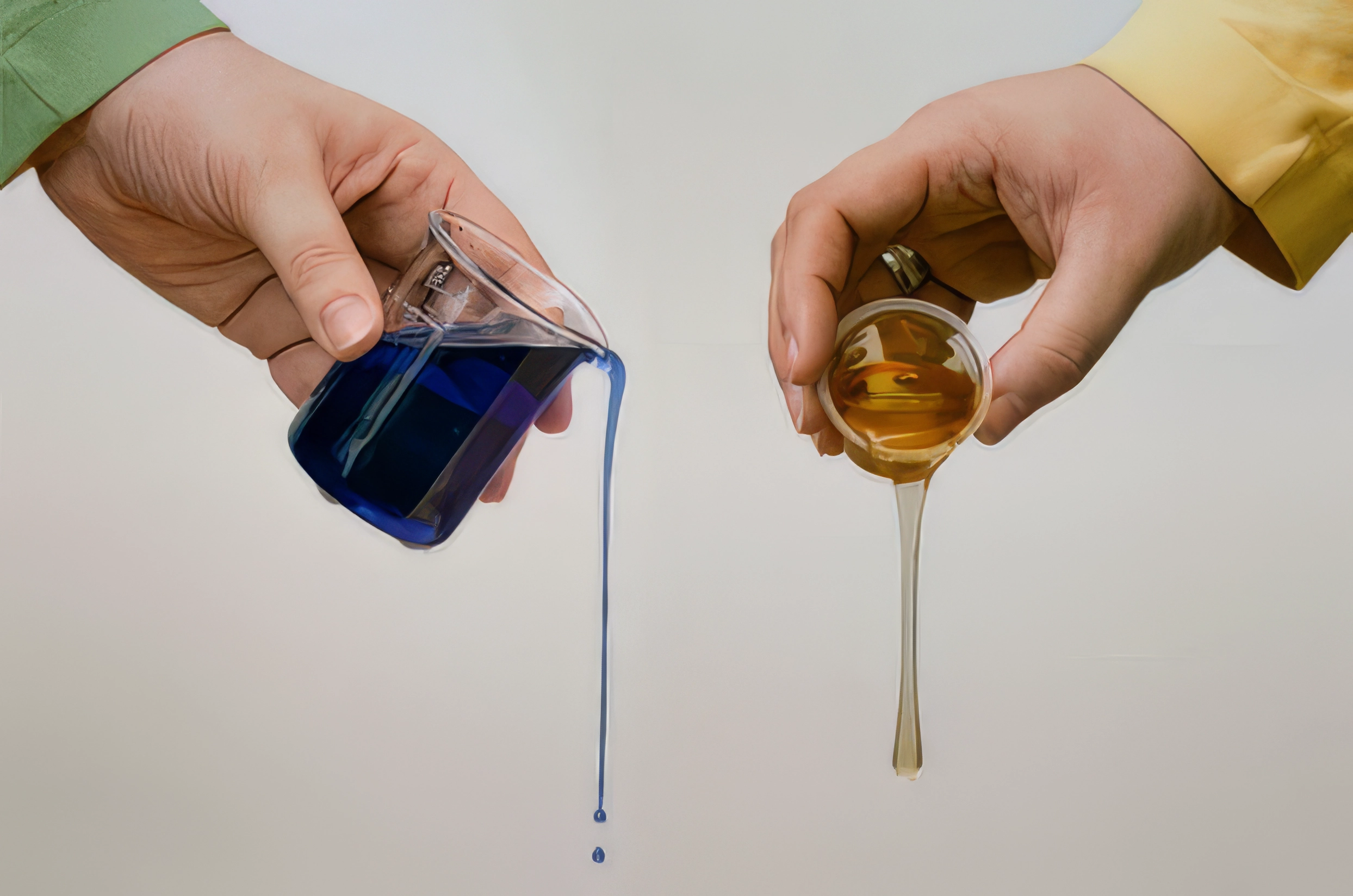
Viscosity is a property of liquids that affects how liquids move and change shape. It is the internal friction of the fluid that prevents it from deforming. Viscosity is an essential physical property that distinguishes a fluid from an elastic solid.
What is interesting about viscosity is its dependence on temperature. We can see this on the example of honey – when we heat honey, its viscosity decreases and it becomes more liquid.
Fluids flow at different rates.
Observe three fluids/liquids (honey, liquid soap and water) flowing out of the test tubes. Compare their flows.
Based on the animation, solve the problem below.
Group the liquids according to their viscosity.
Hint: Liquids that flow more slowly are more viscous.
On the left liquids: honey, liquid soap and water
On the right descriptions: highest viscosity, middle viscosity, lowest viscosity
Honey > Highest viscosity
Liquid soap > Middle viscosity
Water > Lowest viscosity
Viscous fluids slow down the movement of objects. In this activity, you will observe the dropping of beads in different liquids to find out which of the given liquids has the highest viscosity.
Let us take four different liquids: water, syrup, oil, and honey.
Liquids can flow, but honey flows slower than water. Why? It has to do with viscosity.
Make an experiment.
Materials needed: glass beads, glass or plastic measuring cylinder for each liquid, stopwatch.
Perform the experiment in pairs.
Procedure:
- Fill cylinders with different liquids to the same height.
- Drop the glass bead just above the upper level of liquid. Your classmate measures the time till the glass bead reaches the bottom.
- Fill in the data in the following table.
Now repeat the measurements for different temperature.
- Heat the liquids in a water bath to a temperature at least 30 degrees higher.
- Fill cylinders with different liquids to the same height.
- Drop the glass bead just above the upper level of liquid. Your classmate measures the time till the glass bead reaches the bottom.
- Fill in the data in the following table.
- Compare the results of two measurements and make conclusions.
|
Liquids
|
Time in seconds for temperature 1
|
Time in seconds for temperature 2
|
|---|---|---|
|
Water
|
|
|
|
Oil
|
|
|
|
Honey
|
|
|
|
Syrup
|
|
|


